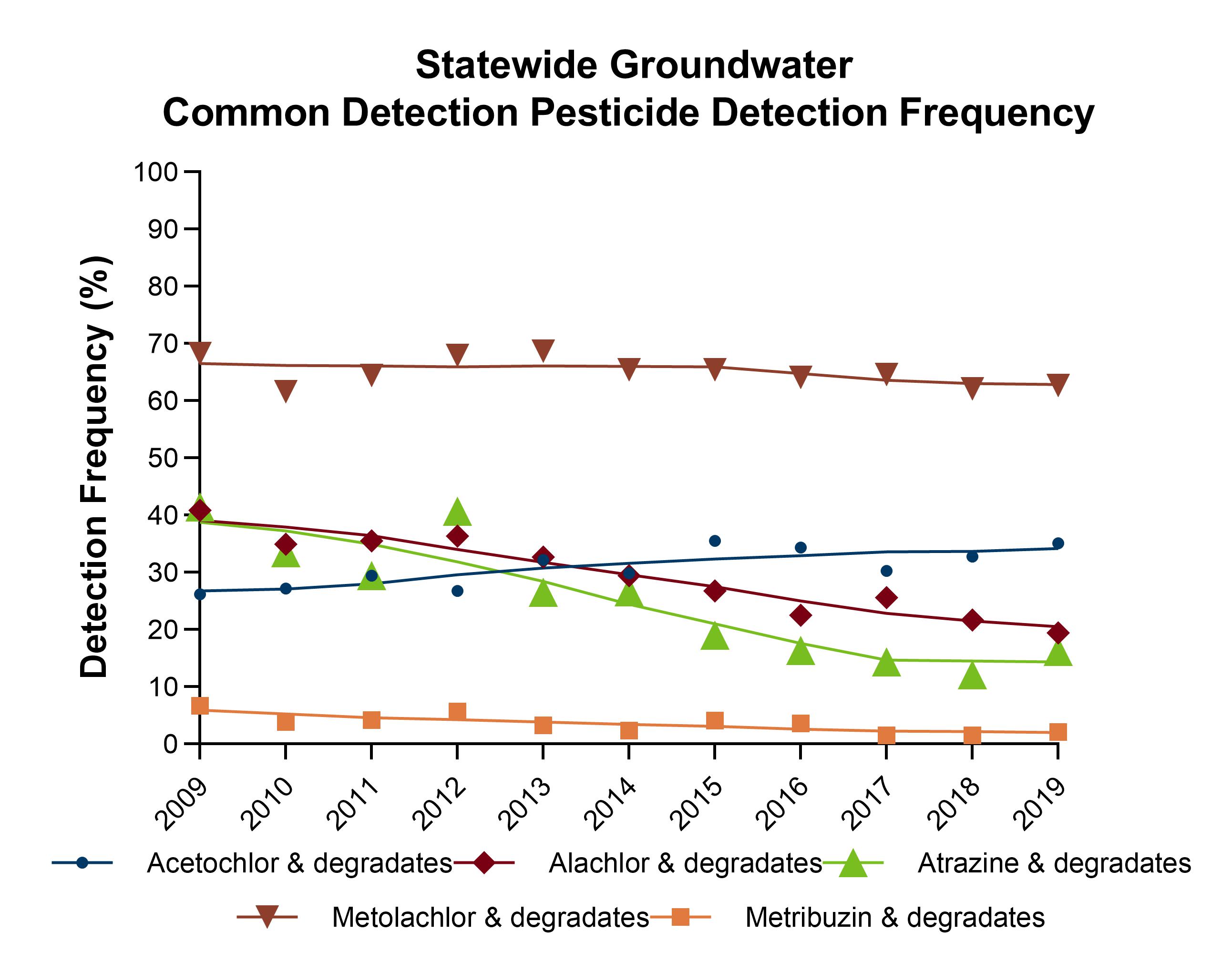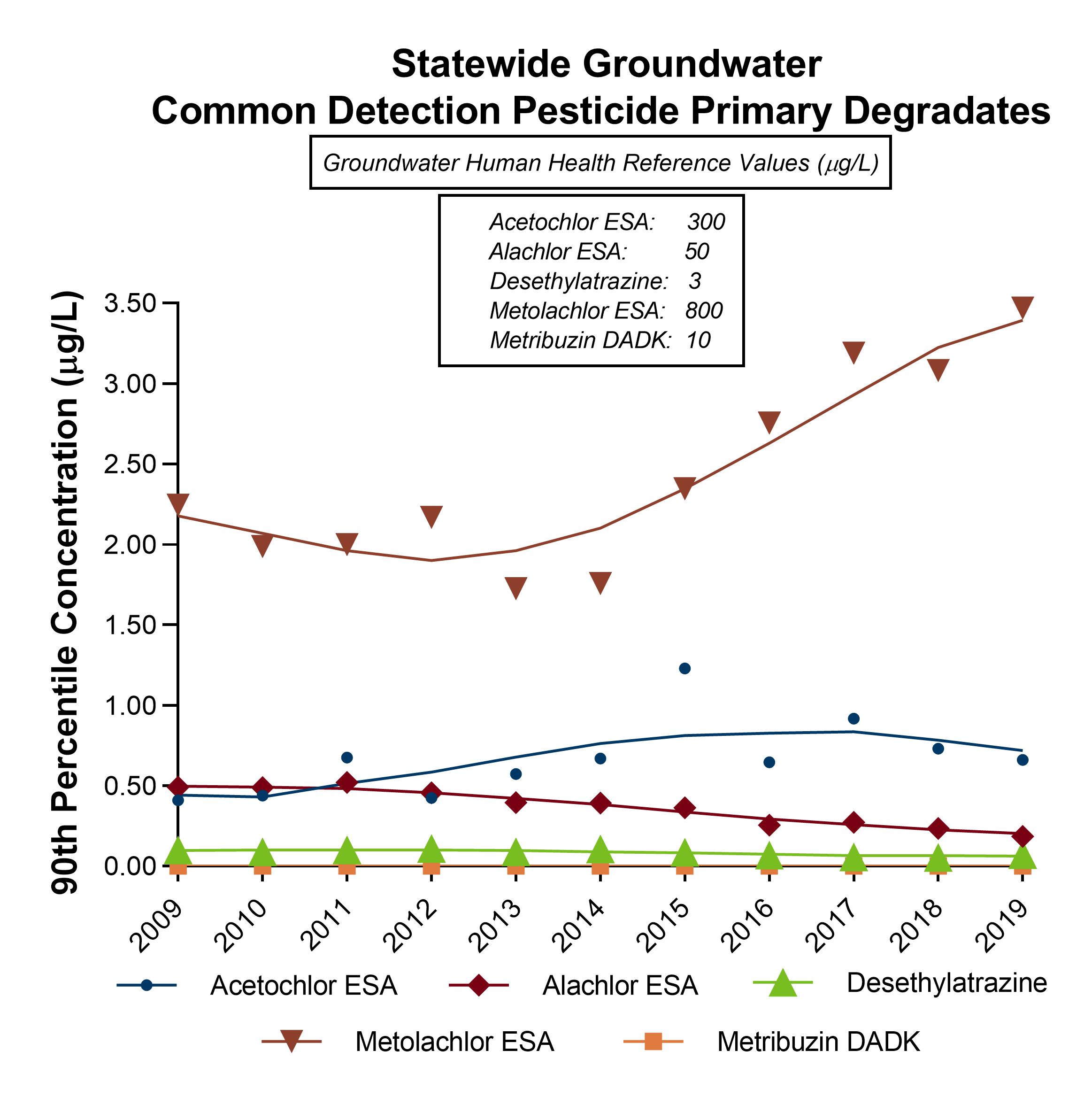The primary goal of the MDA's pesticide groundwater monitoring is to provide detailed information on the occurrence and concentrations of pesticides in Minnesota's groundwater resources. Protection of Minnesota's citizens and water resources from agricultural chemicals is the fundamental purpose of this goal. The program focus is monitoring vulnerable groundwater in the agricultural and urban areas of the state.
In 2022, the MDA’s ambient monitoring program sampled over 160 monitoring wells, naturally occurring springs and private drinking water wells throughout the state for pesticides.
History
In 1987, the Minnesota Legislature amended the Minnesota Pesticide Control Law. It directed the MDA to determine the impact of pesticides on the environment, including the impacts on surface water and groundwater.
In response to this charge, the MDA initiated a pesticide groundwater monitoring program in 1987 and in 1991, began surface water monitoring. The MDA has one of the most comprehensive pesticide monitoring programs in the country.
Groundwater Monitoring Results for 2022
- 518 pesticide samples were collected from 167 routine groundwater monitoring sites (monitoring wells, springs and private drinking water wells).
- 49 different pesticides or pesticide degradates were detected out of 185 pesticide analytes that were analyzed by the MDA Laboratory.
-
Pesticide degradates usually had higher detection frequencies compared to parent pesticides.
-
The parent pesticides with the greatest detection frequency included: clothianidin (19%), fomesafen (18%), bentazon (17%), sulfentrazone (11%), and atrazine and thiamethoxam (both 9%).
-
The pesticide degradates with the greatest detection frequency included: metolachlor ESA (84%), metolachlor OXA (51%), acetochlor ESA (32%), alachlor ESA (29%), and didealkylatrazine (19%)
-
11 samples had a concentration of 4-hydroxychlorothalonil greater than the drinking water Risk Assessment Advice (RAA) of 2,000 ng/L. Three additional samples had a concentration of 4-hydroxychlorothalonil greater than 50% but less than the RAA.
-
All these samples were collected from monitoring wells in PMR 4.
-
-
The total cyanazine (cyanazine plus its degradates) concentration was greater than 50%, but did not exceed, the drinking water reference value of 1,000 ng/L in three samples (out of 223 samples).
-
Two samples were collected from one spring in Goodhue County and one sample from a domestic well in Wabasha County.
-
-
The MDA added six analytes to the LC-MS/MS method in 2022, including: picarbutrazox, picarbutrazox TZ-1E, pyroxasulfone M1, sulfentrazone-3-carboxylic acid, tetraniliprole, tetraniliprole quinazolinone, and one analyte to the glyphosate LC-MS/MS method (glufosinate). The MDA also removed three analytes (flutianil, flutianil OC 56574, and flutianil OC 56635).
-
Pyroxasulfone M1 and sulfentrazone-3-carboxylic acid were the only new analytes detected in
groundwater in 2022.
-
-
Acifluorfen, fluxapyroxad, and inpyrfluxan were all detected for the first time in 2022. Analysis for each analyte began in 2019, 2015, and 2021, respectively.
-
Glyphosate, glufosinate, and AMPA (a glyphosate degradate) were not detected in groundwater (72 samples).
-
Common Detection Pesticides
Common detection is an official state designation made by the MDA Commissioner of Agriculture and is defined as “detection of a pollutant that is not due to misuse or unusual or unique circumstances but is likely to be the result of normal use of a product or a practice” (Minn. Stat. § 103H.005, Subd. 5). Pesticides, and select degradates, that have been designated as “common detection” receive heightened scrutiny from the MDA during reporting of monitoring results. Acetochlor, alachlor, atrazine, metolachlor, and metribuzin are the current common detection pesticides. Atrazine, metolachlor and metribuzin were designated in 2002. Acetochlor and alachlor were designated in 2003.
The graphics below indicate statewide groundwater common detection pesticide detection frequency from 2009 through 2019. Also presented are the annual statewide 90th percentile concentrations for common detection pesticide primary degradates.


Data Availability and Future Work
All of the pesticide data collected as part of MDAs ambient monitoring program is publicly available through the Water Quality Portal or by contacting the MDA. The MDA will continue to improve its program to expand monitoring to new locations and to include additional pesticide analytes, as resources and needs permit. The MDA is committed to maintaining its long-term data record to allow for continued assessment of the impacts of pesticides on groundwater from routine use.

